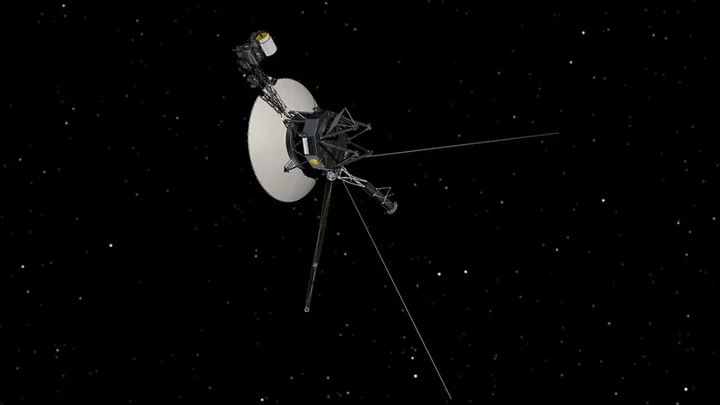Nasa Voyager 2: Space agency accidentally loses contact with pioneering space probe
Nasa has “inadvertently” lost contact with Voyager 2, its pioneering spacecraft. The space agency said that it had sent a series of planned commands to the probe on 21 July. But those moves left Voyager 2 pointing in the wrong direction: its antenna is now pointing two degrees away from Earth, and so it has lost contact with its engineers. It cannot either receive commands or send back data, Nasa said. Ordinarily, it would do so by establishing contact with the Deep Space Network, or DSN, which is a set of ground-based antennas that allow for communications with distant spacecraft. But the data being sent by Voyager 2 is not reaching that network. Voyager 2 is now floating on its own, almost 20 billion kilometres from Earth. Nasa still hopes to be able to re-establish contact with the probe, however. It is programmed to automatically reset its orientation a number of times each year, to push its antenna back to Earth. The next reset is expected to happen on 15 October, Nasa said. Until then, the space agency expects the probe to “remain on its planned trajectory during the quiet period”, it said. As its name suggests, Voyager 2 was part of a pair, both of which were launched in 1977. Voyager 1 is floating even further from Earth – at 24 billion kilometres – and Nasa says it is continuing to operate as normal. The Voyager programme brought with it a host of records: Voyager 2 is the only spacecraft to have visited Uranus and Neptune, and together they are the only spacecraft made by humans to ever have entered interstellar space. Even almost 50 years since they were launched, the pair of Voyager spacecraft have continued to send back useful and important information to Nasa for examination by scientists on Earth. They have contributed to a host of new findings about the very distant edges of our solar system. Read More How to take the perfect picture of tonight's supermoon Elon Musk installs huge, glowing letter on top of his office A game where you go to sleep in real life is one of the most popular in the world
Nasa has “inadvertently” lost contact with Voyager 2, its pioneering spacecraft.
The space agency said that it had sent a series of planned commands to the probe on 21 July. But those moves left Voyager 2 pointing in the wrong direction: its antenna is now pointing two degrees away from Earth, and so it has lost contact with its engineers.
It cannot either receive commands or send back data, Nasa said.
Ordinarily, it would do so by establishing contact with the Deep Space Network, or DSN, which is a set of ground-based antennas that allow for communications with distant spacecraft. But the data being sent by Voyager 2 is not reaching that network.
Voyager 2 is now floating on its own, almost 20 billion kilometres from Earth.
Nasa still hopes to be able to re-establish contact with the probe, however. It is programmed to automatically reset its orientation a number of times each year, to push its antenna back to Earth.
The next reset is expected to happen on 15 October, Nasa said. Until then, the space agency expects the probe to “remain on its planned trajectory during the quiet period”, it said.
As its name suggests, Voyager 2 was part of a pair, both of which were launched in 1977. Voyager 1 is floating even further from Earth – at 24 billion kilometres – and Nasa says it is continuing to operate as normal.
The Voyager programme brought with it a host of records: Voyager 2 is the only spacecraft to have visited Uranus and Neptune, and together they are the only spacecraft made by humans to ever have entered interstellar space.
Even almost 50 years since they were launched, the pair of Voyager spacecraft have continued to send back useful and important information to Nasa for examination by scientists on Earth. They have contributed to a host of new findings about the very distant edges of our solar system.
Read More
How to take the perfect picture of tonight's supermoon
Elon Musk installs huge, glowing letter on top of his office
A game where you go to sleep in real life is one of the most popular in the world









